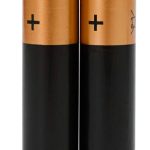One of the most critical aspects of maintaining and improving the performance of your British classic car is optimizing its air-to-fuel ratio. The air-to-fuel ratio, also known as the AFR, is the ratio of air mass to the fuel mass in the engine cylinder. The optimal AFR ensures that your engine has the perfect balance for combustion, thus improving performance and efficiency.
An unbalanced AFR can lead to unwanted effects such as lower power output, inefficient fuel usage, and even damage to the engine. Hence, it’s essential to understand how you can optimize this crucial aspect of your vehicle. We’ll explore five key strategies to achieve this, focusing on understanding AFR, adjusting carburettors, using a wideband O2 sensor, maintaining the engine, and applying fuel injection systems.
Also read : How can you effectively reduce engine vibrations in an older model British sedan?
Understand the Air-to-Fuel Ratio
The first step to optimizing the AFR is understanding what it is and how it impacts your vehicle’s performance. The AFR is the balance between the amount of air and fuel that enters your engine. For gasoline engines, the ideal or stoichiometric AFR is 14.7:1, meaning there are 14.7 parts of air for every one part of fuel.
However, for your British classic car, this may not always be the perfect mix. Depending on the engine design, driving conditions, and fuel type, the optimal AFR might slightly vary. For instance, when accelerating, an engine typically requires a richer mixture, meaning a lower AFR, to produce more power. Conversely, when cruising at constant speeds, a leaner mixture or higher AFR may provide better fuel economy.
This might interest you : What are the most effective insulation materials for soundproofing a UK van?
By understanding these nuances, you can make more informed decisions when adjusting your AFR for optimal performance.
Adjusting the Carburettor
The carburettor in your classic British car is a mechanical device that mixes air and fuel for internal combustion engines. By adjusting the carburettor settings, you can directly affect the AFR, thereby controlling the performance and efficiency of your vehicle.
A lean mixture (higher AFR) might cause the engine to overheat and perform poorly, while a rich mix (lower AFR) can result in wastage of fuel and increased emissions. Therefore, finding the right balance is crucial.
To adjust the carburettor, you’ll need to locate the air-fuel mixture screw, which might require a bit of research depending on your specific model. Turning the screw clockwise will lean out the mixture, while turning it anti-clockwise will enrich it.
Remember, it’s always better to make small changes, test the vehicle’s performance, and then make further adjustments if necessary.
Using a Wideband O2 Sensor
A wideband O2 sensor, or oxygen sensor, can be a valuable tool for tuning your AFR. This sensor measures the oxygen content in your vehicle’s exhaust gases, providing real-time data on the combustion efficiency.
By installing a wideband O2 sensor in your British classic car, you can monitor the AFR and make precise adjustments for optimum performance. The wideband O2 sensor can also help identify any issues with the engine that might be causing an imbalance in the AFR.
However, just having the sensor is not enough. You need to understand the readings and act upon them effectively. A high voltage reading indicates a rich mixture (low AFR), while a low voltage indicates a lean mix (high AFR). Adjustments can then be made accordingly.
Engine Maintenance
Proper maintenance of your classic car’s engine is crucial in maintaining an optimal AFR. Regularly checking and replacing worn-out components can go a long way in ensuring engine efficiency.
For instance, ensuring your air filters are clean and free of debris allows for the correct amount of air to enter the engine. This directly affects the AFR and subsequently, the performance and fuel efficiency of your vehicle.
Similarly, regularly checking and cleaning your spark plugs can ensure optimal combustion, making sure no fuel is wasted.
Applying Fuel Injection Systems
Traditionally, classic British cars were designed with carburettors. However, technology has advanced over the years, and fuel injection systems have become the norm for modern vehicles.
Fuel injection systems provide more precise control over the fuel supply to the engine, subsequently allowing for a more accurate and efficient AFR. If you’re seeking to optimize your classic car’s AFR for better efficiency, it might be worth considering investing in a fuel injection system.
Such a modification may require professional assistance and can be quite expensive. However, the benefits in terms of performance, fuel efficiency, and even emission reductions may well justify the investment.
In conclusion, optimizing the AFR for your classic British car involves understanding the concept of AFR, making adjustments to your carburettor, using tools like a wideband O2 sensor, maintaining your engine, and possibly even upgrading to a fuel injection system. All these steps contribute to improving the performance and efficiency of your vehicle. Remember, the process might require time, patience, and possibly professional assistance. But the end result could be a classic car that is not only a joy to drive but also surprisingly efficient.
Utilizing Variable Valve Timing Systems
Variable valve timing (VVT) systems stand as an innovative method to optimize the air-to-fuel ratio of your classic British car. These systems work by modifying the valve lift event, which affects the movement of the valves in your engine. This allows for a more efficient combustion process, enhancing your vehicle’s fuel efficiency and performance.
Introduced in the United States in the 1980s, the VVT has become a standard feature in modern cars. However, it can also be retrofitted into older models like your classic British car. The VVT system can enhance fuel economy by improving the air-fuel mix, reducing fuel consumption and improving performance, particularly at high speeds.
The VVT system works by adjusting the valve timing, which in turn changes the air-fuel mix in the combustion chamber. This can either enrich or lean the mix, depending on your driving needs. For instance, when you’re accelerating, the VVT system can enrich the mix, providing more power. Conversely, when cruising, it can lean the mix for better fuel efficiency.
Adding a VVT system to your classic British car can be a complex task, given the age and design of these vehicles. However, with professional assistance, it’s a viable option to optimize the air-fuel ratio and improve your car’s performance and efficiency.
Optimizing Fuel Economy with CAFE Standards
In the United States, the Corporate Average Fuel Economy (CAFE) standards have been instrumental in improving the fuel efficiency of passenger cars and light trucks. These regulations were introduced to reduce energy consumption by increasing the fuel efficiency of cars and light trucks.
The CAFE standards can serve as a useful guide to optimize the fuel economy of your classic British car. They provide valuable insights into effective strategies for reducing fuel consumption and emissions. These may include modifying the engine design, improving the vehicle’s aerodynamics, and using lighter materials in the car’s construction.
Following the CAFE standards, you can aim to reduce your vehicle’s fuel consumption while maintaining or even improving performance. This might involve retrofitting modern, energy-efficient parts into your classic car, or even undertaking a full engine overhaul.
In the pursuit of fuel economy, it’s essential to remember that every bit counts. Even minor modifications, like using low rolling resistance tyres, can contribute significantly to improving your vehicle’s fuel consumption and reducing greenhouse gas emissions.
Conclusion
Optimizing the air-to-fuel ratio of your classic British car is a multifaceted task, encompassing everything from understanding the underlying principles of the AFR to adjusting the carburettor, using a wideband O2 sensor, maintaining the engine, and even considering significant modifications like installing a fuel injection or variable valve timing system. Following the CAFE standards can offer further guidance on improving fuel economy and reducing emissions.
While the task may seem daunting, the rewards in terms of improved performance, fuel efficiency, and reduced environmental impact make it worthwhile. Harnessing the power of modern technology, we can breathe new life into these classic vehicles, enhancing their efficiency without compromising their timeless charm.
Remember, this journey towards an optimal AFR requires patience and possibly professional assistance. But the result is a classic British car that is a joy to drive, fuel-efficient, and a testament to the perfect synergy between vintage charm and modern technology.











